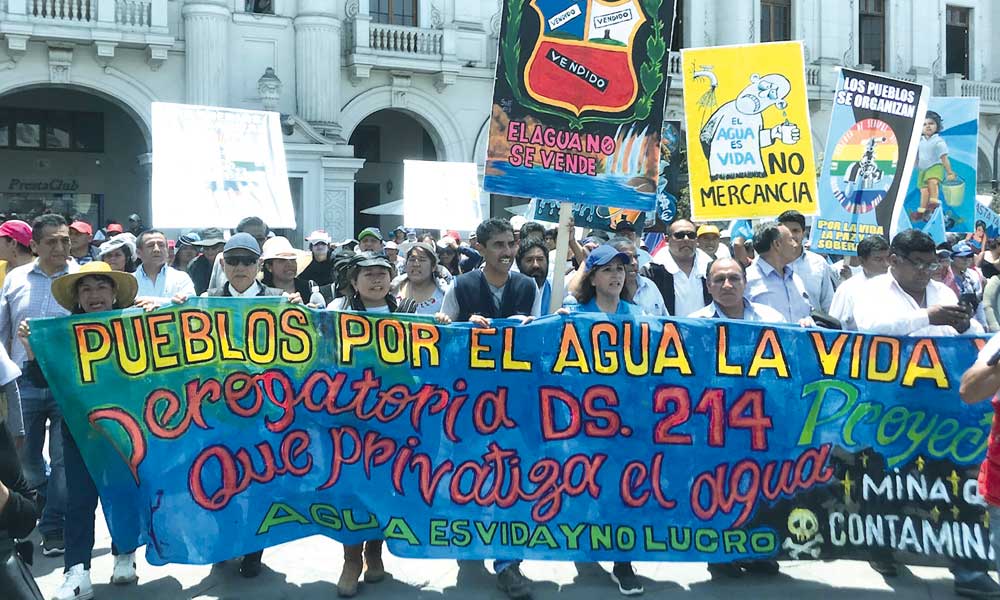
Weeks after a nationwide uprising in Chile was sparked by protests over transit fare hikes in the capital, politicians in neighboring Peru are issuing nervous warnings in the wake of days of street demonstrations in Lima. On Nov. 29, students occupied Central Station on Lima’s Metro to demand subsidized transit fares, “adjusted to the real incomes of Peruvians.” The riot police were mobilized to clear the station, and a tense stand-off with protesters ensued. (EuroNews, Peru21, Nov. 29) Nov. 28 saw an angry march throughout downtown Lima by municipal water-workers and their trade-union allies, to oppose the privatization of the city’s water system. The march was called by the water-workers union SUTESAL after President Martín Vizcarra signed Supreme Decree 214, calling for the sale of shares in the Lima Potable Water & Sewage Service (SEDAPAL), initiating longstanding plans to privatize the state company. (Diario Uno, Nov. 29; Gestión, Nov. 15)
Hundreds also took to the streets of downtown Lima Nov. 25, when Peru’s Constitutional Tribunal ordered the release of right-wing opposition leader Keiko Fujimori, who was arrested just over a year ago and placed under an 18-month order of “preventative detention” while corruption charges are pending against her. She was ordered freed following a habeas corpus petition brought by her sister, Sachie Fujimori. The protests against her release saw brief stone-throwing and clashes with police. The release order is scheduled to be carried out this weekend. (Peru21, Nov. 29; RPP, Al Jazeera, Nov. 25
President Vizcarra explicitly took note of the threat of widespread unrest when he told the Annual Conference of Executives (CADE) the evening of Nov. 29 that Peru “is not free of protests” and must work to fight corruption and close the wealth gap. But his prescription was for an “authentic” free market to lift all Peruvians. (InfoBae, Nov. 29) In other words, precisely the policies that are now being protested.
All this comes with Peru still in deep political crisis. The Constitutional Tribunal agreed last month to hear a challenge by right-opposition lawmakers to Vizcarra’s dissolution of the corruption-plagued Congress by executive order. The Sept. 30 order sparked a brief power struggle, as some 20 opposition lawmakers refused to leave the Congressional chamber, but backed down late that night after the building was surrounded by troops and the entire downtown area filled with angry protesters.
Congress is to re-convene after new elections are held in January. Until then, only the 27-member Permanent Commission of Congress is meeting. It is empowered to vote on bills introduced by Vizcarra’s cabinet, which was also purged in the wake of the shake-up. (Reuters, Oct. 29; Peruvian Times, Oct. 4; Peruvian Times, Oct. 1)
Photo: Diario Uno





Peru high court: closure of congress was legal
In a 4-3 decision Jan. 14, Peru's Constitutional Tribunal declared President Martín Vizcarra’s Sept. 30 closure of Congress to have been legal, finding that the president's lack of confidence was sufficient cause. Vizcarra took to twitter to celebrate the win. (Jurist)